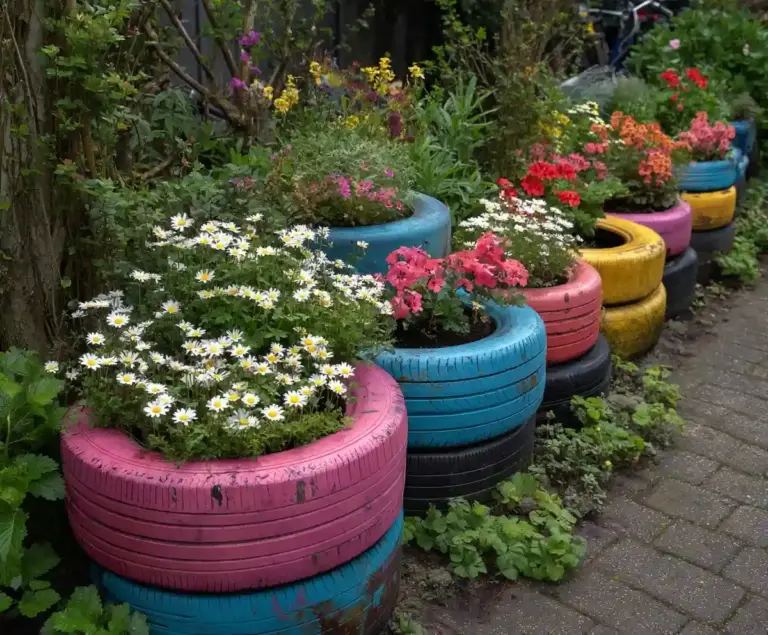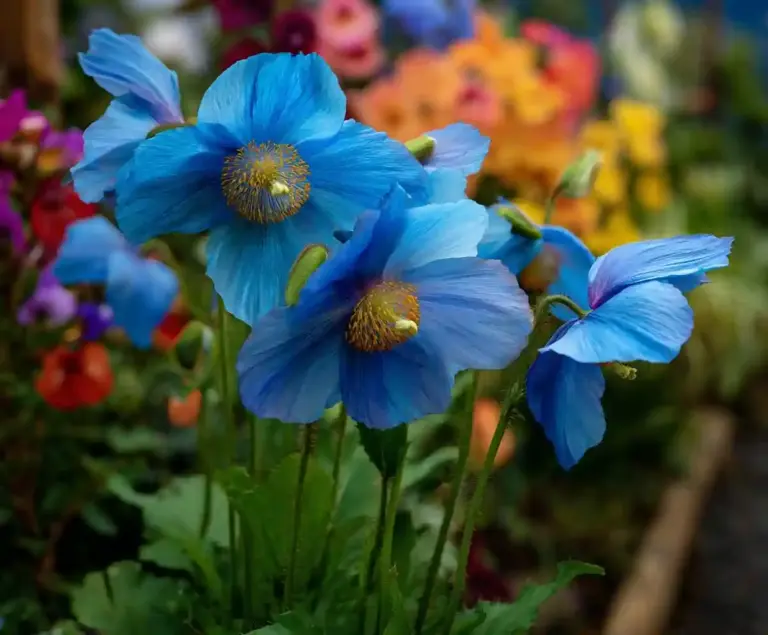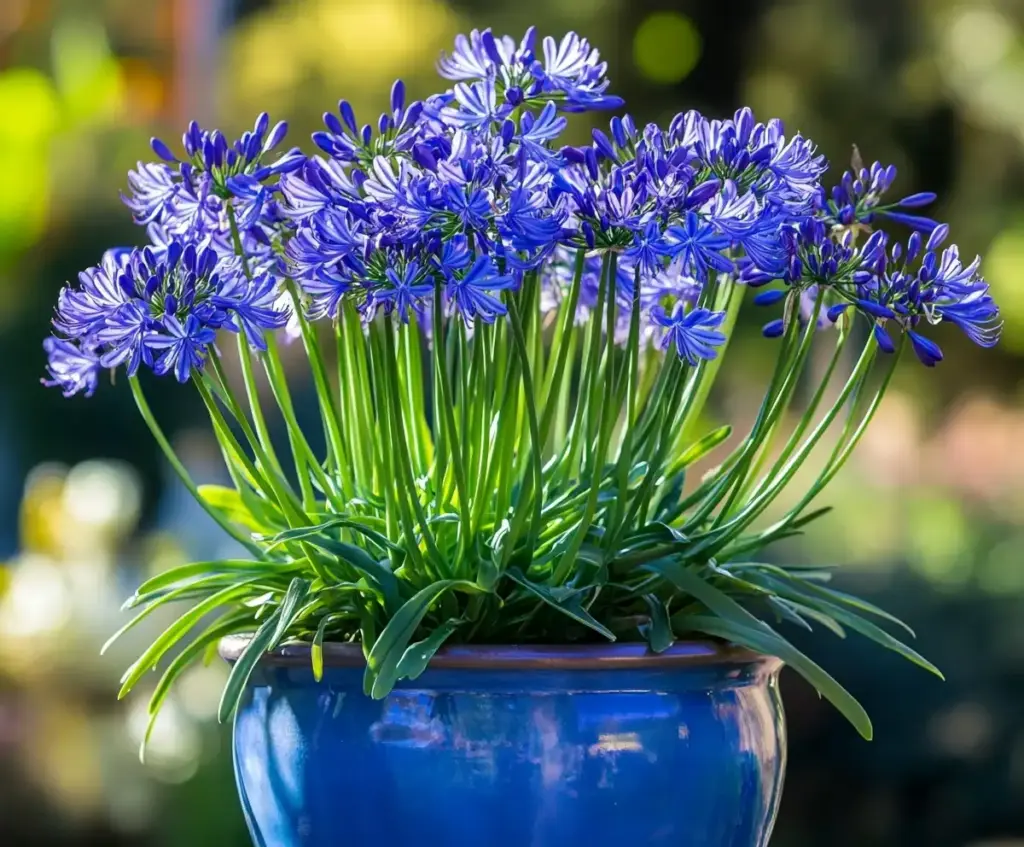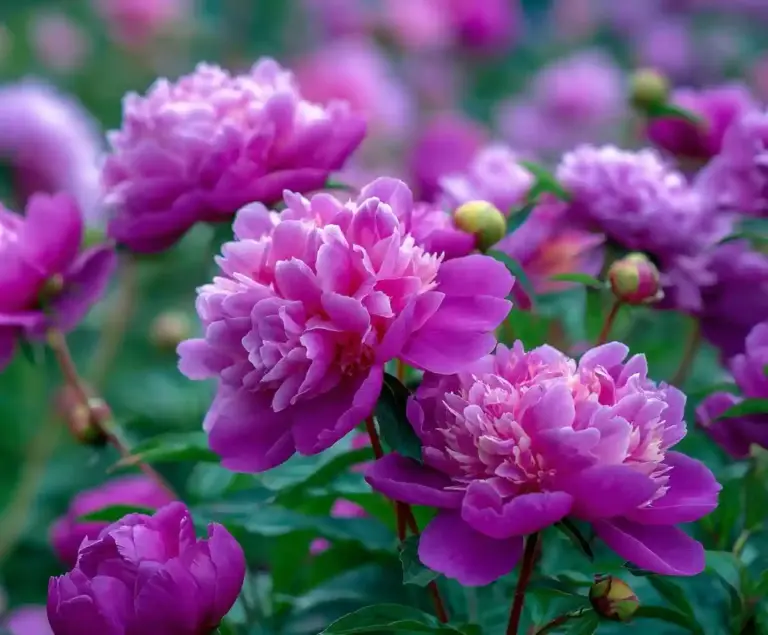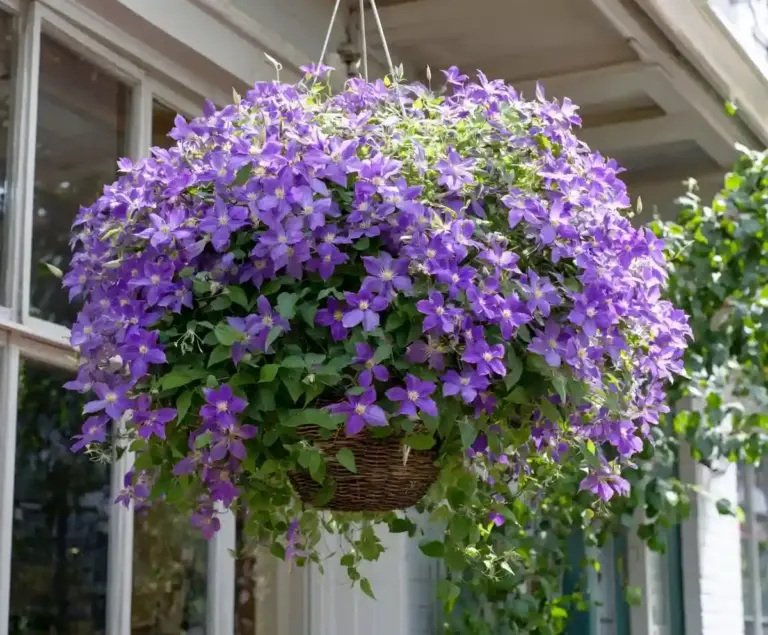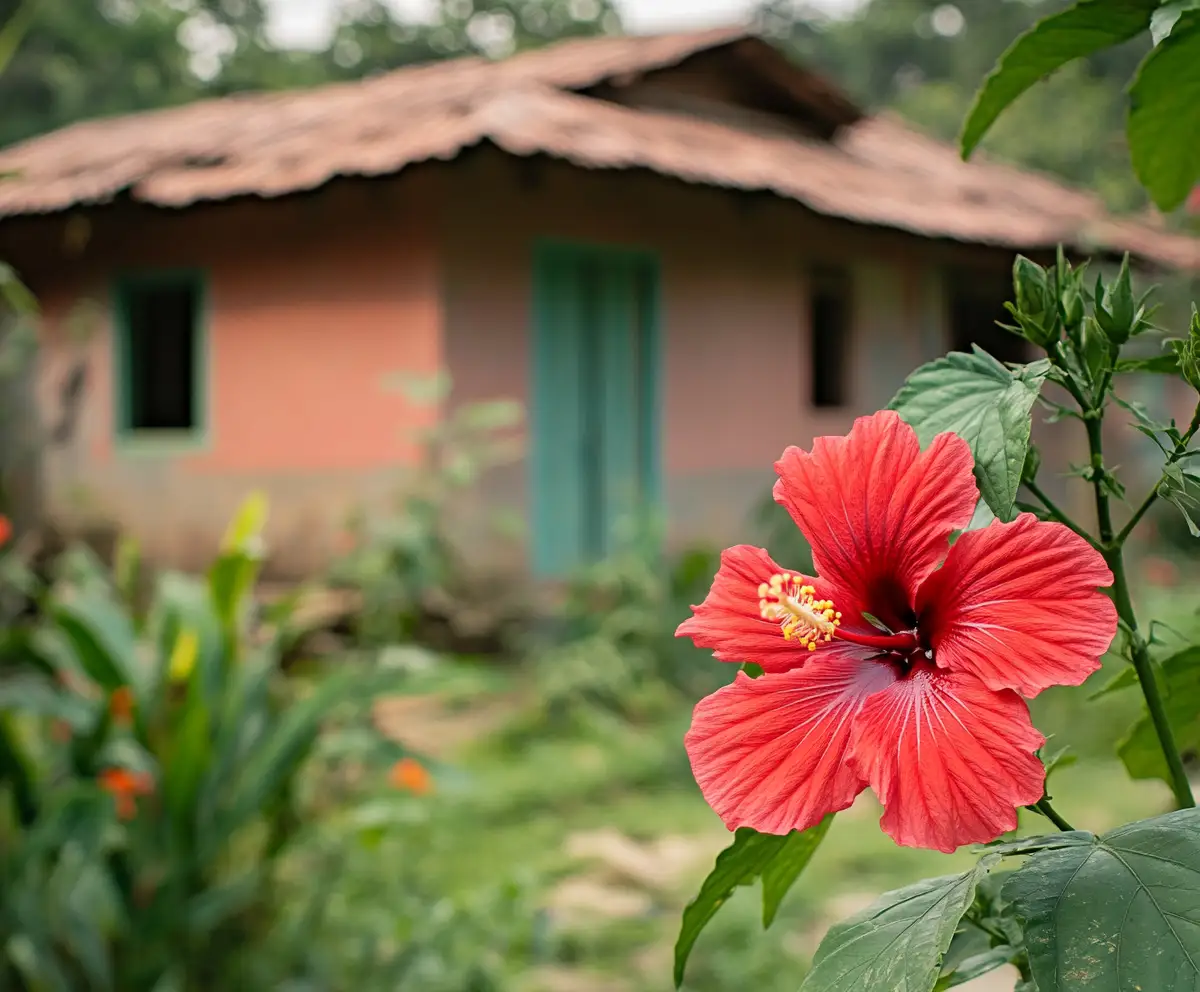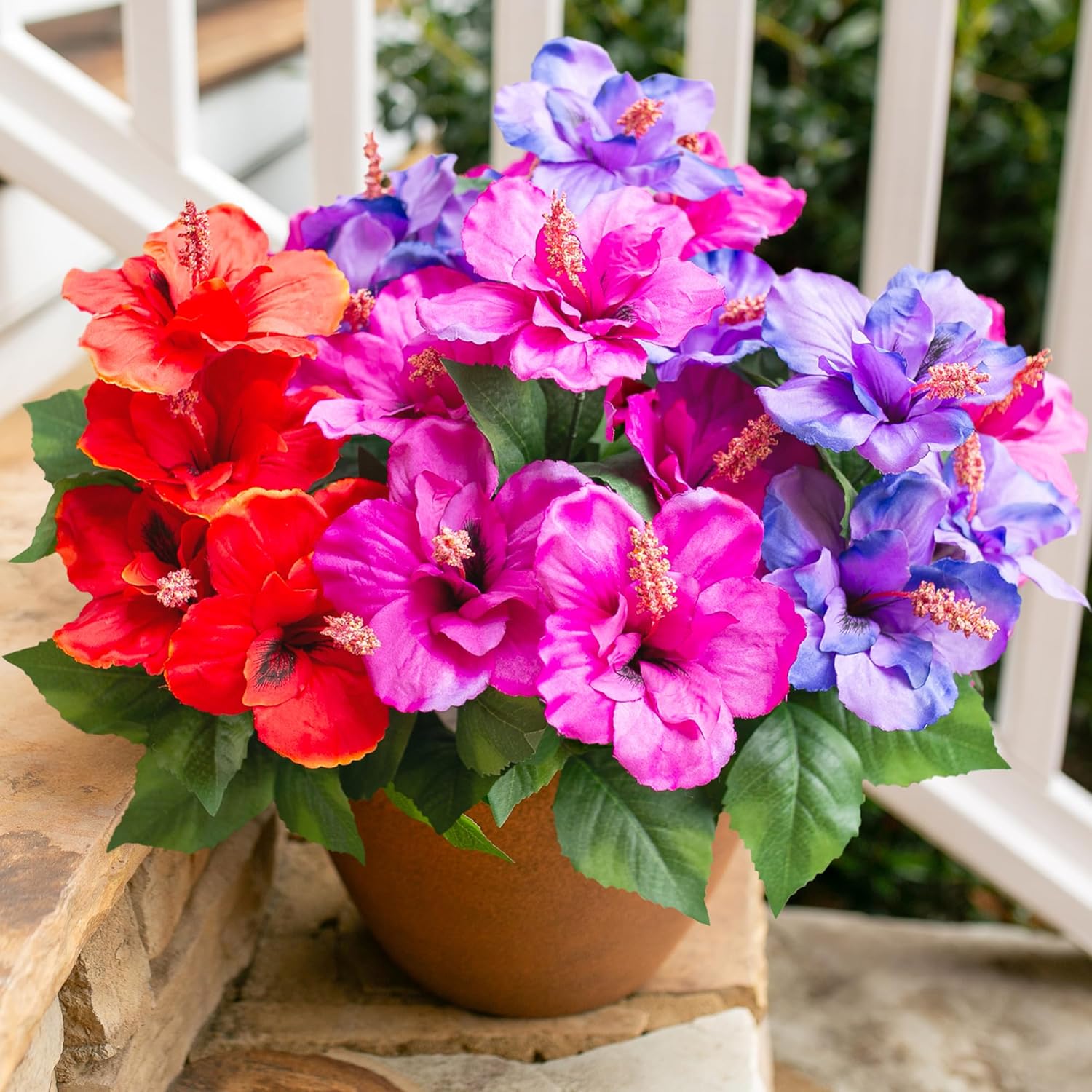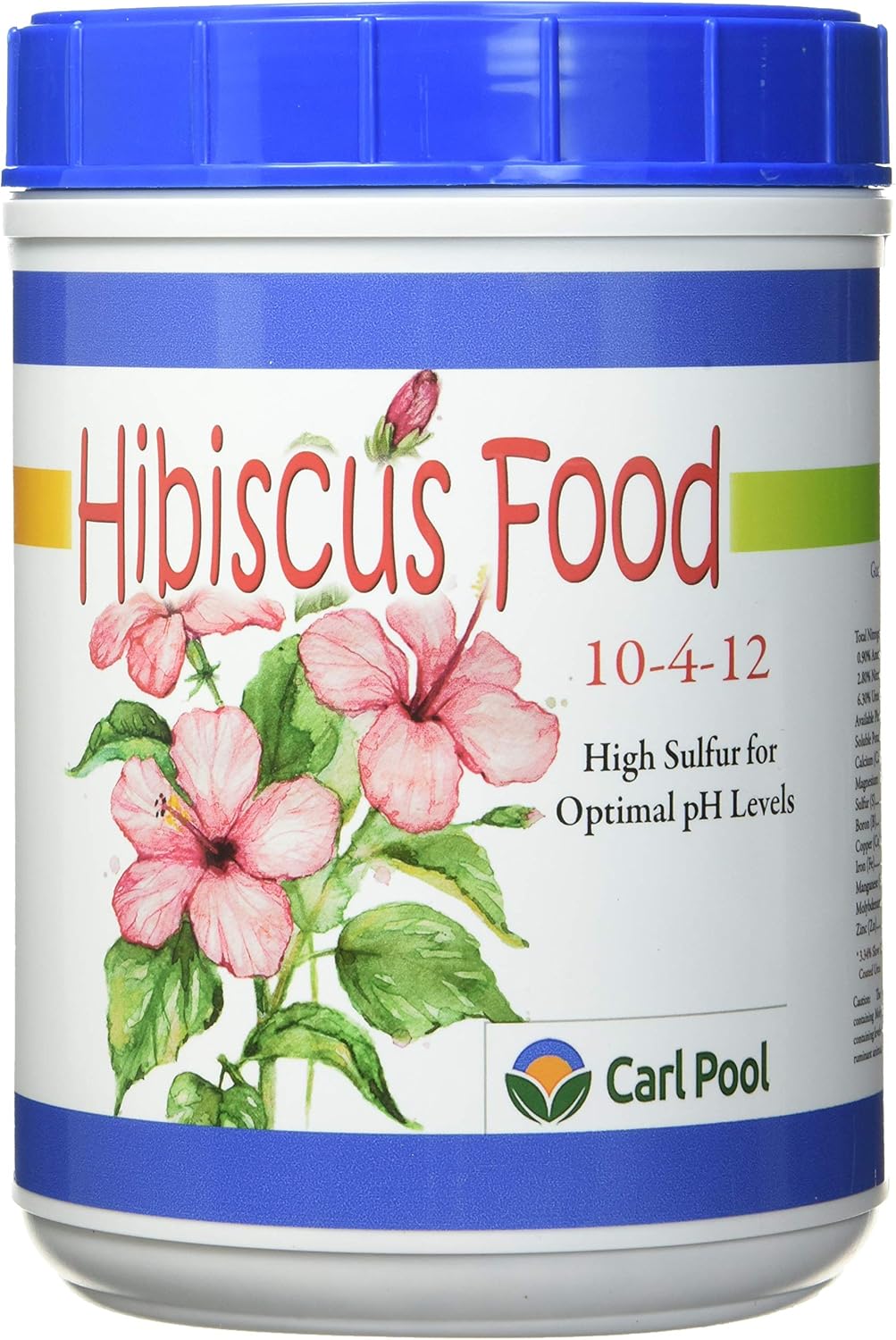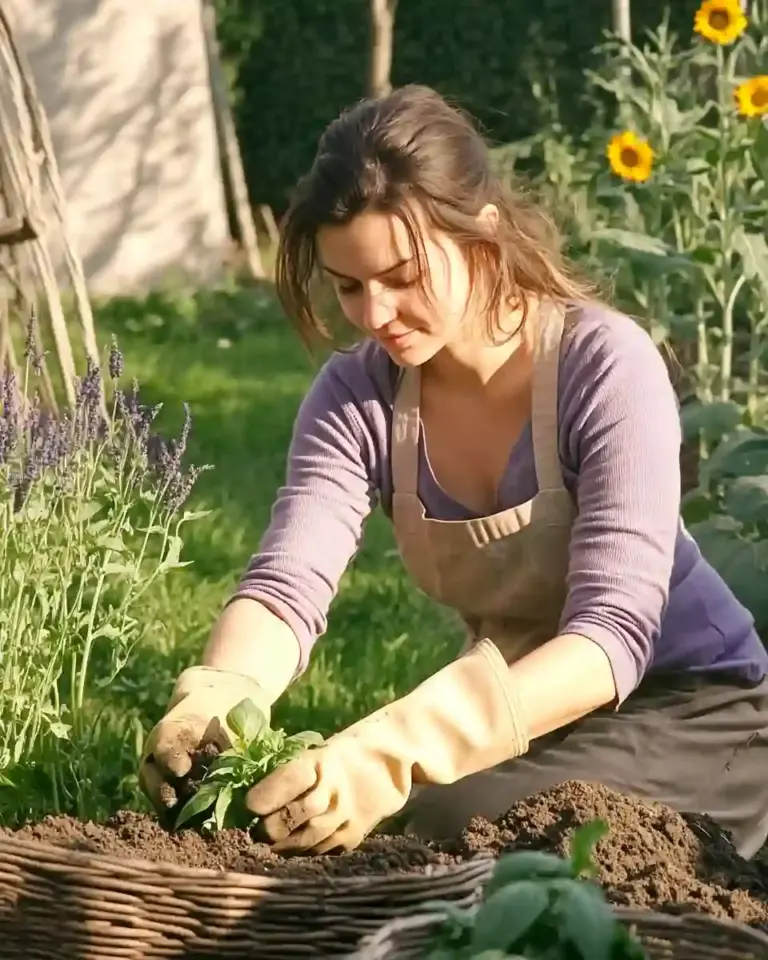Hibiscus plants, with their showy, trumpet-shaped flowers and bold tropical flair, bring instant charm to any garden—no tropical climate required. Whether you’re captivated by hardy hibiscus in cooler regions or nurturing tropical varieties in containers, you’re in the right place to learn how to grow and care for hibiscus successfully. From creating the perfect environment with sunlight and well-draining soil to pruning, propagation methods, and pest management, this guide will help you cultivate stunning blooms all season long.
In this complete care guide, we’ll walk through everything you need to know—from optimal light and soil conditions to watering strategies, pruning and propagation techniques, protecting against pests, and overwintering tips—so your hibiscus thrives year after year.
Table of Contents
🌞 Hibiscus Care: Creating the Perfect Environment
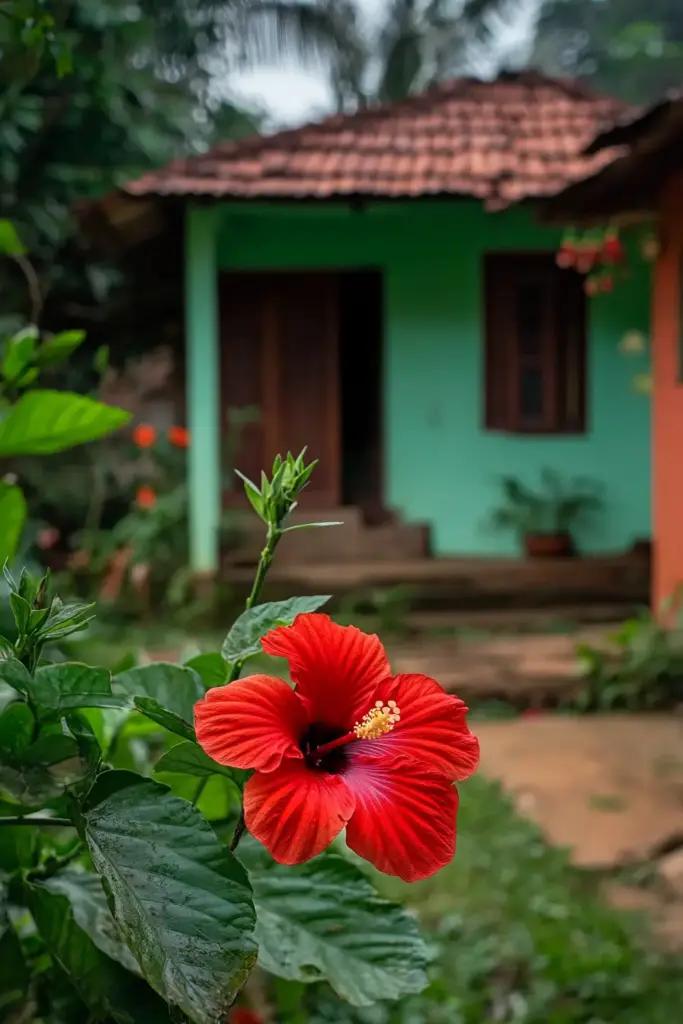
Caring for hibiscus isn’t one-size-fits-all—it depends on whether you’re growing a hardy or tropical variety, and whether it’s indoors or outside. But no matter the type, all hibiscus plants share some key needs for thriving. Here’s how to set them up for success.
☀️ Light Requirements
Hibiscus loves the sun—but how much it needs can depend on where you live.
- In cooler northern regions: Full sun (6+ hours daily) is ideal to encourage flowering.
- In hotter southern climates: Filtered sunlight or partial shade is better to prevent leaf scorch.
- Indoors: Place your hibiscus near a bright window, but avoid direct, harsh midday sun. If moving it outside for summer, acclimate slowly to avoid shock.
🌱 Best Soil for Hibiscus
Healthy roots = happy blooms. Hibiscus prefers:
- Loamy, well-draining soil that’s rich in organic matter
- Moist, but never soggy conditions
- A slightly acidic pH between 6.0–6.5
- Mulch around the base to help retain moisture and regulate temperature
Pro tip: Hardy hibiscus varieties thrive even in areas with heavier, wetter soil—great for spots where other plants struggle.
💧 Watering Tips
Hibiscus is a thirsty plant—especially in the heat of summer.
- Outdoors: Water regularly to keep the soil consistently moist.
- Containers: Water when the top inch of soil feels dry. Daily watering may be needed during hot spells.
- Indoors: During the growing season (spring to early fall), keep soil slightly moist. In winter, reduce watering and let the soil dry out a bit between sessions.
🌡️ Temperature and Humidity
Temperature and humidity play a huge role in hibiscus health.
- Hardy hibiscus can survive frigid winters—down to -30°F!
- Tropical hibiscus needs warmth and will suffer below 50°F. Bring potted plants indoors before temps dip.
- All varieties thrive in high humidity. Indoor plants love steamy rooms like bathrooms.
🌿 Fertilizing for Blooms
To fuel those spectacular flowers:
- Use a balanced, water-soluble fertilizer once a week during the growing season (look for something low in phosphorus like 10-4-12).
- Slow-release fertilizers are great for hardy varieties—apply in early spring, midsummer, and after the first flush of blooms.
- Stop fertilizing in winter when the plant is dormant.
🌺 Types of Hibiscus: Choosing the Right Variety for Your Garden
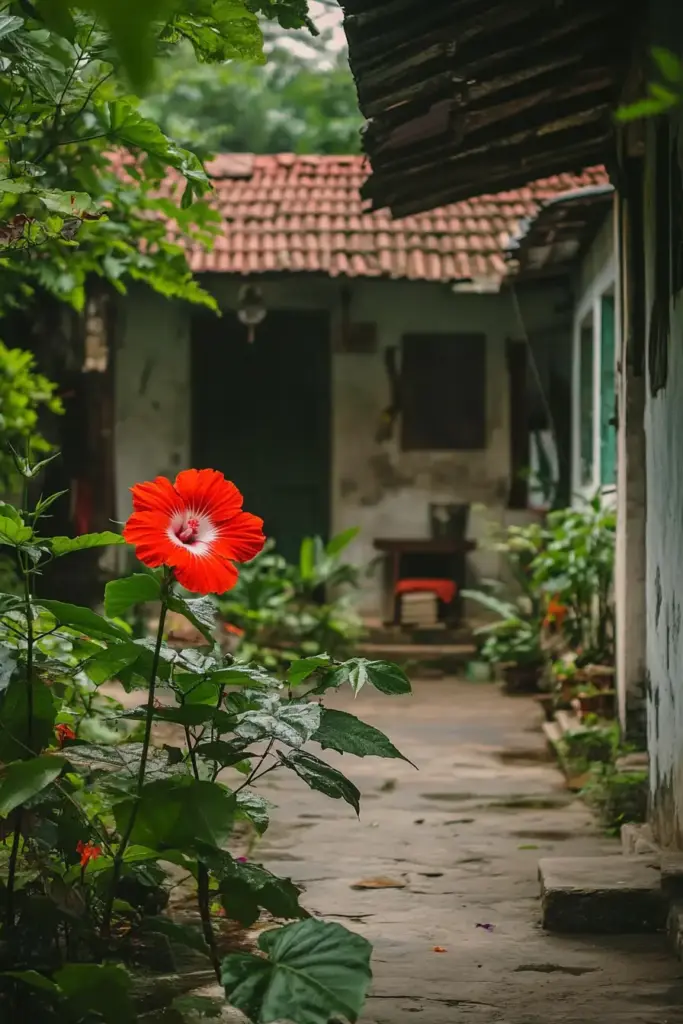
Before diving into how to grow and care for hibiscus, it’s important to know which type you’re working with. Hibiscus comes in many forms—from cold-hardy perennials to tropical stunners that thrive in warm zones or containers. Here are four of the most beloved types, each with its own personality and needs:
🌴 Tropical Hibiscus (Hibiscus rosa-sinensis)
- Best for: Warm climates or indoor growing
- USDA Zones: 9–11 (overwinter indoors in colder areas)
- Bloom time: Spring through fall
- Flowers: Large, vibrant, and available in endless colors including red, yellow, orange, and pink
Tropical hibiscus brings exotic flair with nonstop blooms—just make sure it gets plenty of sunlight and protection from cold weather.
❄️ Hardy Hibiscus (Hibiscus moscheutos)
- Best for: Cooler northern climates
- USDA Zones: 4–9
- Bloom time: Mid to late summer until frost
- Flowers: Dinner-plate-sized blooms in pink, red, white, and magenta
These cold-tolerant beauties die back in winter but return stronger each year. They’re perfect for perennial borders or garden beds that need a bold focal point.
💧 Swamp Hibiscus (Hibiscus coccineus)
- Best for: Wet or boggy areas
- USDA Zones: 6–9
- Bloom time: Summer
- Flowers: Striking red, star-shaped blooms
Native to the southeastern U.S., swamp hibiscus loves soggy conditions and is ideal for rain gardens or alongside ponds.
🌸 Cotton Rose (Hibiscus mutabilis)
- Best for: Warmer regions or container gardening
- USDA Zones: 7–11
- Bloom time: Late summer to fall
- Flowers: Color-changing blooms that start white or pink and deepen to magenta or red over a few days
A true conversation starter, this variety adds drama with its evolving flower colors and shrubby growth habit.
🤔 Is Hibiscus the Right Plant for You?
Still wondering if hibiscus is the right choice for your garden? Here’s a quick checklist to help you decide. Hibiscus might be a perfect match if:
- ✅ You want bold, colorful blooms that attract hummingbirds and butterflies
- ✅ You’re looking for a low-maintenance flowering plant with high impact
- ✅ You live in a cool or warm climate—there’s a variety for every zone
- ✅ You have space for a container garden or garden beds
- ✅ You enjoy seasonal interest and long bloom times
Whether you’re in a frost-prone area or a tropical zone, there’s a hibiscus variety that fits your conditions. And with proper care, these plants can bring joy for years—some hardy varieties can live for decades!
✂️ How to Prune Hibiscus for More Blooms
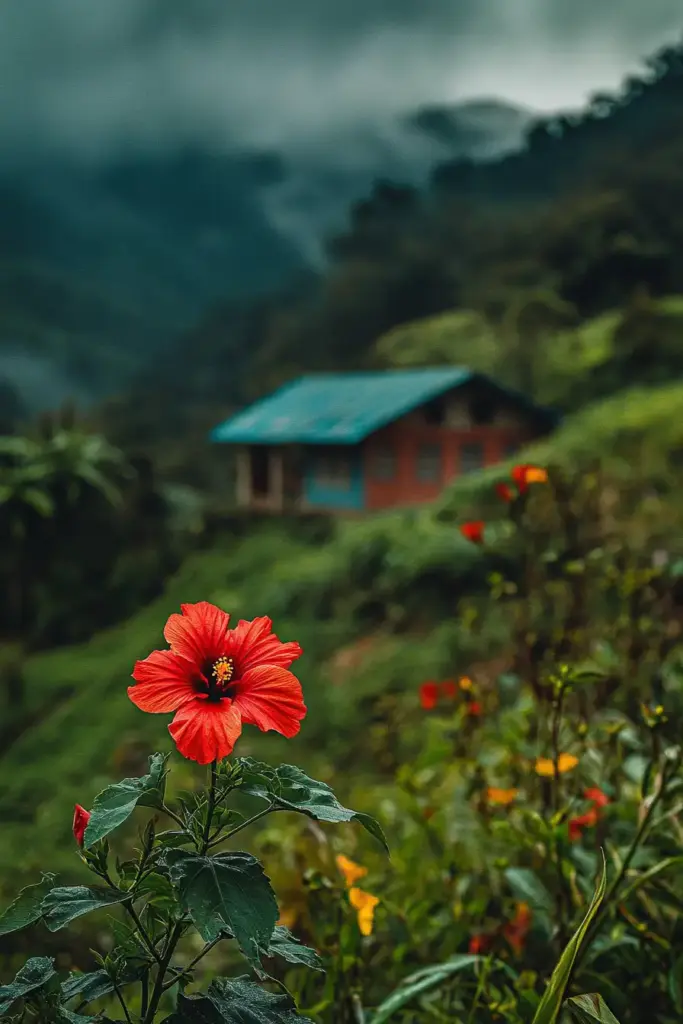
Pruning hibiscus isn’t just about tidying up—it actually helps your plant grow stronger, produce more flowers, and maintain a better shape. Whether you have a tropical or hardy type, pruning at the right time keeps the show going all season long.
When to Prune Hibiscus
- Hardy hibiscus: These die back in winter, so you’ll mainly be removing dead stems in early spring as new growth appears.
- Tropical hibiscus: Prune lightly in early spring before active growth starts. You can also shape the plant throughout the growing season as needed.
Pro tip: Avoid heavy pruning in late summer or fall—it can reduce the number of blooms or stress the plant before dormancy.
What to Prune
- Cut away any dead, damaged, or diseased branches as soon as you spot them
- Trim back leggy or overgrown stems to encourage fuller growth
- Remove crossing branches to improve airflow and reduce the risk of pests or disease
Pruning encourages fresh shoots and more flower buds—so don’t be afraid to give your hibiscus a seasonal trim!
🌿 Propagating Hibiscus: Growing Your Garden the Easy Way
Want more hibiscus without buying more plants? Propagating hibiscus is a fun and rewarding way to multiply your garden favorites. Depending on the type, you can grow new plants from either stem cuttings or seeds.
🌱 Propagation by Cuttings (Best for Most Types)
The easiest and most reliable method for both tropical and hardy hibiscus is stem cuttings.
Here’s how to do it:
- In early summer, snip a 4–6 inch healthy stem just below a leaf node.
- Remove the lower leaves, leaving only the top two.
- Dip the cut end in rooting hormone to boost success (optional but helpful).
- Plant the cutting in moist, well-draining soil or a mix of peat and perlite.
- Cover with a plastic dome or bag to hold in humidity.
- Keep in a warm, bright (indirect light) location and mist as needed.
Roots should form in a few weeks—and once they do, you can transplant your new hibiscus to a larger pot or directly into the garden.
🌼 Growing Hibiscus from Seed (Best for Swamp and Roselle)
Most hibiscus hybrids and tropical varieties won’t grow true to type from seed, but swamp hibiscus (Hibiscus coccineus) and roselle (Hibiscus sabdariffa, used in teas) can be successfully grown this way.
Tips for seed propagation:
- Soak seeds overnight in warm water to soften the seed coat.
- Sow in seed-starting mix and keep warm (around 70–75°F).
- Germination may take 2–4 weeks, so be patient!
Heads up: Avoid seed propagation for tropical hybrids unless you’re up for a surprise—seedlings rarely look like the parent plant.
🪴 Potting and Repotting Hibiscus: Container Care Tips
Whether you’re growing tropical hibiscus in a pot or just need to give your plant a fresh start, knowing how to pot and repot properly makes a big difference in health and blooms.
🏺 Choosing the Right Pot
- Go wide, not deep: Hibiscus prefers a pot that’s shallow and wide rather than deep. This helps focus energy on flowering, not just root growth.
- Drainage is key: Always use a pot with drainage holes to prevent soggy roots.
- Material matters: Terra cotta pots allow excess moisture to evaporate, while plastic retains more water—choose based on your watering habits.
🧼 When and How to Repot
Repot your hibiscus every 1–2 years, ideally in early spring before the growing season kicks off.
Steps to repot:
- Select a pot that’s 1–2 inches larger in diameter than the current one.
- Gently remove the plant and shake off old soil.
- Refresh with well-draining potting mix—you can add compost or perlite for a boost.
- Set the plant at the same soil level as before, not deeper.
- Water thoroughly to help the roots settle in.
Repotting reinvigorates your hibiscus by giving it fresh nutrients and space to grow—especially important for container-bound plants that can quickly become rootbound.
❄️ Overwintering Hibiscus: How to Keep It Alive in Cold Weather
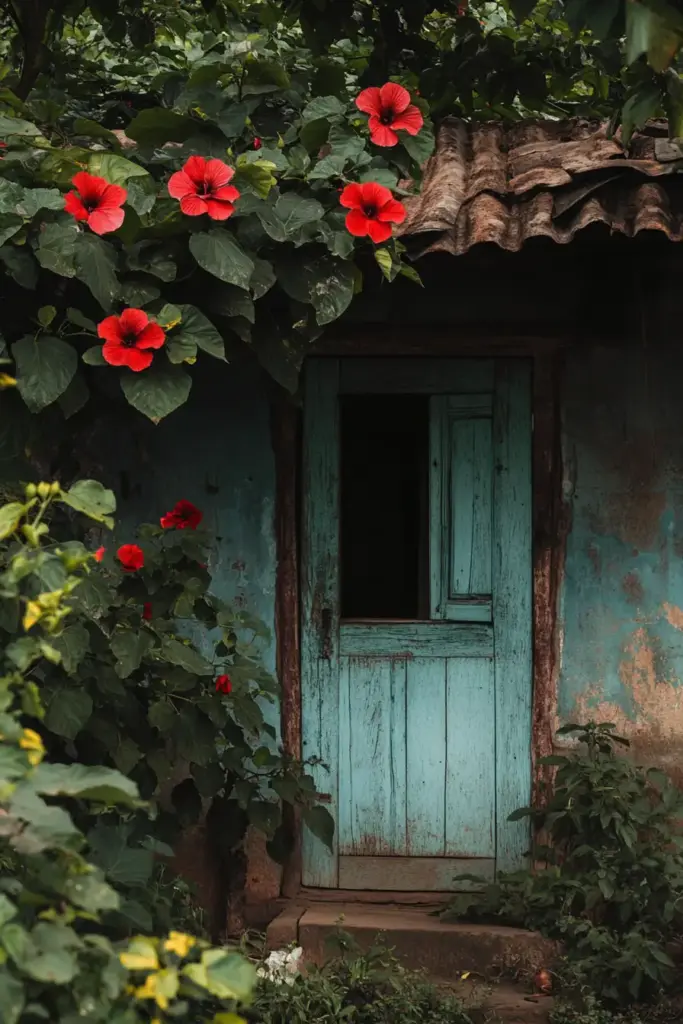
If you’re growing tropical hibiscus in a zone where winter temps dip below 50°F, you’ll need to protect it from the cold. Luckily, overwintering is easy with a bit of prep—and it can help your plant come back stronger the next spring.
🏡 Bringing Hibiscus Indoors
Tropical hibiscus doesn’t handle frost. Before the first cold snap:
- Trim it back by about one-third to reduce stress and encourage new spring growth.
- Inspect for pests and spray the leaves with water or insecticidal soap if needed.
- Choose a warm, sunny spot indoors, like near a south-facing window or in a heated sunroom.
- Stop fertilizing and let the plant rest during its dormant phase.
- Water sparingly, only when the top inch of soil is dry.
Expect some leaf drop—this is totally normal during dormancy. Come spring, you’ll see fresh new growth once days get longer and warmer.
🌡️ Hardy Hibiscus in Winter
Hardy hibiscus is a cold-weather champ and doesn’t need special care. Just:
- Cut it back to the ground after the first frost (or in early spring)
- Add a layer of mulch around the base to insulate roots
🐛 Common Pests and Diseases: Keeping Hibiscus Healthy
Hibiscus plants are fairly resilient, but like any garden favorite, they’re not completely pest-proof. Knowing what to look for—and how to respond quickly—can save your plant from stress and keep those blooms coming.
🕷️ Common Hibiscus Pests
- Spider Mites
- Thrive in dry conditions
- Signs: Fine webbing on leaves, yellow stippling
- Treatment: Increase humidity, rinse leaves, or use insecticidal soap
- Aphids
- Tiny insects that cluster on new growth
- Signs: Sticky residue (honeydew), curled leaves
- Treatment: Hose off with water or apply neem oil or insecticidal soap
- Whiteflies & Mealybugs
- Often found on the undersides of leaves
- Signs: Wilting, leaf drop, or visible white fuzz
- Treatment: Remove manually, use sticky traps, or apply horticultural oil
Pro tip: Regularly inspecting your hibiscus—especially before bringing it indoors—can prevent full-blown infestations.
🌿 Disease Issues to Watch For
- Root rot: Caused by overwatering or poorly draining soil. Avoid soggy conditions and ensure your pot has drainage holes.
- Leaf spots or blight: Often fungal. Prune affected areas and improve air circulation.
- Yellowing leaves: Could be due to sudden weather shifts, poor watering habits, or lack of nutrients. A little yellowing is normal during seasonal transitions—but excessive leaf drop is worth investigating.
🦌 Bonus: Are Hibiscus Deer-Resistant?
Not always. While some species are less appealing to deer, others—especially tropical varieties—can be nibbled. If deer are a problem in your area, consider using a repellant spray or fencing.
🌼 How to Get Hibiscus to Bloom (and Keep It Blooming!)
There’s nothing quite like the bold, tropical look of hibiscus flowers in full bloom. But what if your plant’s not putting on a show? Don’t worry—we’ve got tips to turn that leafy green into a floral machine.
📅 Bloom Timeline
- Bloom season: Most hibiscus bloom from June to early fall
- Hardy hibiscus: Blooms from mid-to-late summer until the first frost
- Tropical hibiscus: With the right care, can bloom from spring through late fall, even continuing into winter in frost-free climates
Fun fact: Most hibiscus flowers only last one day, but plants produce a continuous stream of new buds for weeks—or even months.
🌟 How to Encourage More Blooms
If your hibiscus is stubbornly refusing to flower, check these essentials:
- Sunlight: Hibiscus loves light. Aim for at least 6 hours of bright sun daily
- Fertilizer: Use a low-phosphorus, high-potassium fertilizer weekly (like 10-4-12)
- Watering: Keep soil consistently moist, especially during active growth
- Pruning: Lightly prune in spring to promote more branching—and more flowers
- Pests: Watch for aphids and mites that can weaken blooms
✂️ Deadheading and Aftercare
- Deadheading (removing spent flowers) keeps your plant looking tidy and may encourage more buds
- For perennial hibiscus, cutting it back by one-third after the first bloom can trigger a second flush of flowers
Even a little extra care can lead to a big reward—hibiscus plants are known for putting on incredible floral displays when happy.
🚨 Common Problems With Hibiscus (And How to Fix Them)
Even with the best care, hibiscus plants can run into a few hiccups. Here’s how to diagnose and fix the most common issues so your plant stays healthy and blooming.
🍃 Yellowing Leaves
A few yellow leaves now and then? Totally normal—especially during seasonal changes. But if yellowing becomes widespread, here are possible causes:
- Overwatering or underwatering: Both can stress the plant. Check soil moisture before watering.
- Sudden temperature swings: Moving your plant or cold drafts can trigger yellow leaves.
- Nutrient deficiency: Feed your plant regularly during the growing season.
🌸 Bud Drop
Nothing’s more frustrating than watching buds fall off before they bloom! Common culprits include:
- Low humidity
- Inconsistent watering
- Not enough sunlight
- Overfertilizing
Try misting the plant, maintaining steady moisture, and placing it in brighter light to encourage healthy bud development.
🍂 Other Red Flags
- Leaves curling or turning brown? It may be getting too much direct sun or drying out too fast.
- No flowers at all? Check for low light, heavy pruning, or too much nitrogen in your fertilizer.
Most hibiscus problems are easy to fix once you figure out the cause. A little observation goes a long way.
🌿 Conclusion: Grow Bold With Hibiscus
Learning how to grow and care for hibiscus opens the door to a garden filled with color, pollinators, and tropical vibes—whether you’re in a northern zone or a warmer climate. With the right light, regular watering, and just a bit of seasonal TLC, hibiscus rewards you with show-stopping blooms from summer through fall.
From choosing the right variety to mastering pruning and overwintering, you now have everything you need to help your hibiscus thrive. Happy growing—and don’t forget to stop and admire those one-day wonders when they bloom!
🌿 Love gardening inspiration? Follow me on Pinterest for bold plant ideas, tips, and seasonal color!
More Posts
